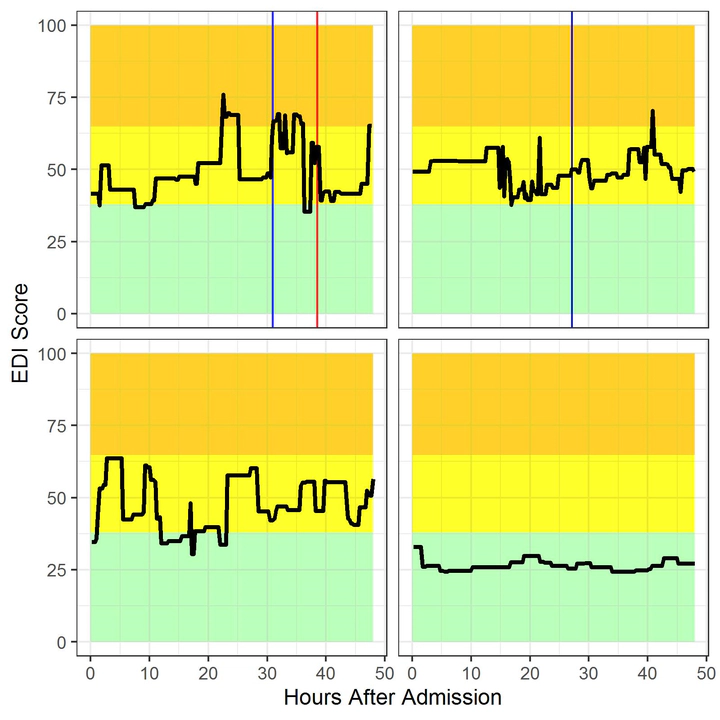Evaluating a Widely Implemented Proprietary Deterioration Index Model Among Hospitalized COVID-19 Patients

Abstract
Introduction: The Epic Deterioration Index (EDI) is a proprietary prediction model implemented in over 100 U.S. hospitals that was widely used to support medical decision-making during the COVID-19 pandemic. The EDI has not been independently evaluated, and other proprietary models have been shown to be biased against vulnerable populations.
Methods: We studied adult patients admitted with COVID-19 to non-ICU care at a large academic medical center from March 9 through May 20, 2020. We used the EDI, calculated at 15-minute intervals, to predict a composite outcome of ICU-level care, mechanical ventilation, or in-hospital death. In a subset of patients hospitalized for at least 48 hours, we also evaluated the ability of the EDI to identify patients at low risk of experiencing this composite outcome during their remaining hospitalization.
Results: Among 392 COVID-19 hospitalizations meeting inclusion criteria, 103 (26%) met the composite outcome. Median age of the cohort was 64 (IQR 53-75) with 168 (43%) African Americans and 169 (43%) women. Area under the receiver-operating-characteristic curve (AUC) of the EDI was 0.79 (95% CI 0.74-0.84). EDI predictions did not differ by race or sex. When exploring clinically-relevant thresholds of the EDI, we found patients who met or exceeded an EDI of 68.8 made up 14% of the study cohort and had a 74% probability of experiencing the composite outcome during their hospitalization with a median lead time of 24 hours from when this threshold was first exceeded. Among the 286 patients hospitalized for at least 48 hours who had not experienced the composite outcome, 14 (13%) never exceeded an EDI of 37.9, with a negative predictive value of 90% and a sensitivity above this threshold of 91%.
Conclusion: We found the EDI identifies small subsets of high- and low-risk COVID-19 patients with fair discrimination. We did not find evidence of bias by race or sex. These findings highlight the importance of independent evaluation of proprietary models before widespread operational use among COVID-19 patients.